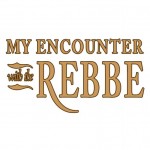Mr. Gershon Wachtel
On an absolute lark, in the summer of 1972, I decided to go to Israel. I was a twenty-two-year-old public school music teacher from Niagara Falls, so this was a pretty way-out thing to do. My family, who was completely secular, didn’t even believe that I would go through with it.
But I was dead set on going, and I ended up enjoying it very much, even staying on past the summer. One day, I was walking through the Tel Aviv central bus station when some yeshivah student came up and asked me if I wanted to do something.
“Alright,” I agreed, “how much will it cost?”
“Nothing,” he said, and the next thing I knew, he placed a kind of lemon in my one hand and some branches in the other. He instructed me to say some words and put the lemon and the branches together and then he began shaking them back and forth with me.
“What is going on here?” I thought to myself in embarrassment. And yet, somehow, that was the start of my Jewish observance. That student in the bus station might have gone home wondering what he had accomplished, but by helping me perform the mitzvah of lulav and etrog, he got the ball rolling.
When I got back to Niagara Falls, I began reading everything I could about Judaism, Israel, Jewish history – anything. I began taking Hebrew lessons from an Israeli, who told me about the Chabad House in nearby Buffalo. There I joined a Torah class led by a rabbi with a thick, straggly beard named Heschel Greenberg. We were just learning the plain text, without any deep explanations, but I was completely inspired. It felt real. (more…)





